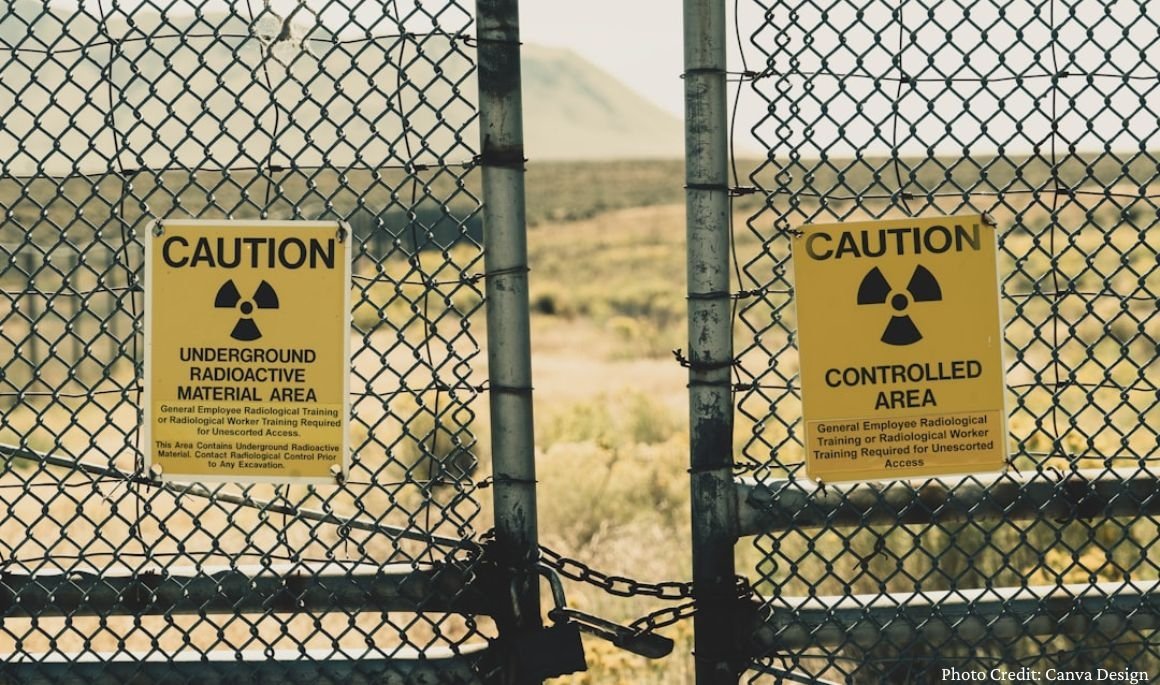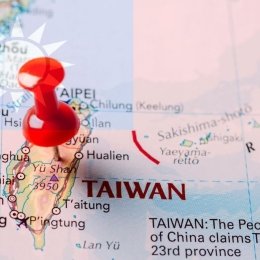- Norwich Blogs
- Blogs
- A Case for Controlled Nuclear Proliferation
A Case for Controlled Nuclear Proliferation
This piece presents a provocative perspective on nuclear weapons proliferation. Tchantouridze argues that the traditional approach of non-proliferation, which aims to prevent the spread of nuclear weapons, may no longer be effective or realistic in the current global landscape. He suggests that a controlled proliferation strategy, where more nations possess nuclear capabilities under regulated conditions, could potentially enhance global stability by deterring aggressive actions and promoting a balance of power. This approach challenges conventional wisdom and invites readers to reconsider the dynamics of nuclear diplomacy and security in the modern era.

Disclaimer: These opinion pieces represent the authors’ personal views, and do not necessarily reflect the official policies or positions of Norwich University or PAWC.
The successful strategic arms reduction treaty negotiations since the late 1960s and the avoidance of a nuclear conflict during the Cold War demonstrated, at least to the faithful, that nuclear deterrence worked. However, much has changed since the end of the Cold War: the old logic of non-proliferation and bilateral deterrence does not work anymore. The arms reduction treaties negotiated between the United States and the Soviet Union have become irrelevant – both the United States and the Russian Federation have demonstrated this fact by abrogating select treaties. Since Russia invaded Ukraine in February 2022, proclamations of threats of nuclear war have become commonplace. Proliferation of nuclear weapons – a process that started in the final decades of the Cold War – has proceeded unabated. Soon, more states will have nuclear weapons than the original five that initiated the 1968 non-proliferation (NPT) treaty. Since the NPT was adopted as a norm for the nuclear weapons regime, South Africa, Ukraine, Belarus, and Kazakhstan owned nuclear weapons briefly. However, India, Pakistan, North Korea, and Israel have acquired nuclear weapons and are actively expanding their arsenal. It is widely believed that Iran will soon join this club.
To get ahead of this set of runaway problems, the United States will have to walk away from its long-standing nuclear non-proliferation policy. Instead, Washington will better defend Western democracies and pro-Western nations by replacing it with a policy of controlled proliferation. America’s highly reliable allies, such as Canada and Australia, have to be encouraged and assisted in developing their own nuclear weapons. They will have to develop or purchase relevant delivery systems as well as maintain their own nuclear deterrence capabilities. Both these nations have been closely aligned with American policies since World War II, and neither of them can avoid becoming targets in the case of another world war involving the United States. Even though Australia is not a member of the NATO alliance, it is a major U.S. ally with very close defense and security ties. The two countries have signed a series of bilateral treaties, and Australia is one of the four states with which the United States has very close intelligence-sharing arrangements. Both Canada and Australia possess economic foundations and scientific know-how as well as stable political structures to support responsible developments and deployments of nuclear weapons and their delivery systems.
If the United States does not change its Cold War-era approach to nuclear weapons, it risks soon dealing with a world that has many nuclear-armed adversaries – Russia, China, North Korea, and in the near future, Iran – that historically have been in opposition to the US-led world order. This will encourage other states with lukewarm relations with the United States to challenge America’s balancing role in the international system and seek their own advantages within it. There are states with historical ambitions as well as enough wealth and technological know-how that could embark on a path of unilateral foreign policies leading to the arms race and potential clashes with neighbors: India, Pakistan, Turkey, Hungary, Serbia, Saudi Arabia, Venezuela, Kazakhstan, Uzbekistan, Indonesia, and Egypt. In such a scenario, even small nuclear powers could successfully counter America’s preference for a free and open world with commerce and freedom of navigation available to all responsible members. Nuclear proliferation among those states that are historically opposed to the U.S.-led world order or those that never embraced the ideals of freedom and democracy will put severe pressure on those that have been allied with the United States and embraced paths of democratic development.
In a catastrophic case of an all-out nuclear war between two great powers, e.g., the United States and the Russian Federation, the third great power, the People’s Republic of China (PRC), will not be able to stay neutral by not taking part in a nuclear exchange. It is worth remembering that the PRC and Russia are close strategic allies, having signed a “no limits” friendship treaty. Presidents Putin and Russia and Xi of China declared a "no limits" partnership in February 2022, days before Moscow commenced its full-scale invasion of Ukraine. The initial communique issued after the proclamation was fairly vague and non-committal. However, when the two sides declared a "new era" in relations in May 2024, it became clearer who the adversary in their joint efforts was: the United States.
Besides, in the unlikely case of a full-scale nuclear war, neither Russia nor the United States would want China to emerge as the sole global hegemon lording over them. No matter who wins in a large-scale nuclear war between the United States and Russia, both will emerge heavily damaged from such a catastrophic war. Suppose Beijing manages to stay neutral in a nuclear war between the United States and Russia. In that case, it will emerge as the only undisputed world hegemon – an undesirable outcome for both Washington and Moscow. To avoid being targeted by both sides, Beijing will be forced to align with one of the combatants, which will most likely be Russia.
The United States would likely prevail against both Russia and China individually. However, it will most likely lose a nuclear war and end up obliterated if these two were to combine forces. In addition, such traditional enemies of the United States as North Korea (DPRK) would also play a role. In short, in a hypothetical case of an all-out nuclear war, the United States may have to face multiple adversaries alone. In such a war, geographic size and the ability to control the seas with nuclear-armed attack submarines will make a significant difference. Canada and Australia each possess large landmass, and both have access to the world’s oceans. Each of these countries can aid the United States individually in America’s quest for global nuclear deterrence.
Further, by acquiring their own nuclear weapons capabilities, Australia and Canada will deter potential adversaries on their own. The PRC may get desperate for natural resources, whether agricultural or mineral, to provide for its population. If that happens, Australia would be its natural target: lots of land and resources but little population. If the PRC were to attack Australia with a massive conventional force, it is not entirely clear how the United States might help its ally without engaging the PRC in a nuclear war.
Joining the nuclear club of nations closely allied with the United States, Canada and Australia will grant more credibility to the concept of extended deterrence currently championed by the United States. America’s allies like Japan and the Republic of Korea (South Korea) are increasingly anxious due to ominous developments in their immediate neighborhood. They have both sought and will further seek America’s ascent to their plans of developing indigenous nuclear capabilities. Both South Korea and Japan are technologically and scientifically competent to produce nuclear weapons in short order, but they are also densely populated and relatively small. In all scenarios of nuclear war, geography and population density matter. That is why the United States has been against these countries acquiring nuclear weapons – they may turn into liabilities rather than assets.
However, both Japan and South Korea would be more reassured if one or two more allies were to extend nuclear deterrence. A collective extended nuclear deterrence is logically more convincing than that offered by a single power. In the latter case, allies depend on a single team of decision-makers tied to a single national set of political and economic circumstances. In a deterrence scenario in which more than one nuclear power provides a nuclear umbrella to allies such as South Korea, Japan, and the Republic of China (Taiwan), nuclear deterrence would truly become "extended" in the direct meaning of this word.
No set of circumstances inevitably leads to a nuclear conflict. Nuclear powers are not predestined to fight a nuclear war, even if one emerges as a challenger to a more established world power. However, almost casual threats of nuclear war voiced in Moscow and Chinese imperial expansionism in the South China Sea are reasonable indications that these two capitals of large nuclear nations see weaknesses in the United States and its deterrence policy. Such weaknesses may become a severe problem for the United States and its allies. To avoid a future in which the world's democracies may end up at the mercy of major autocratic expansionist regimes, the U.S. should take charge of the outdated practices and revise them in favor of its non-nuclear allies.
Lasha Tchantouridze, PhD, directs international affairs programs at Norwich University. He is also an incoming professor at the Joint and Combined Warfighting School, the Joint Forces Staff College of the National Defense University.



